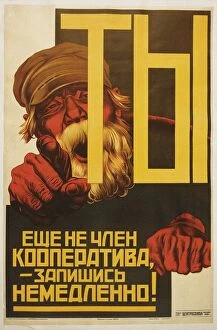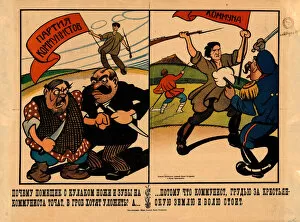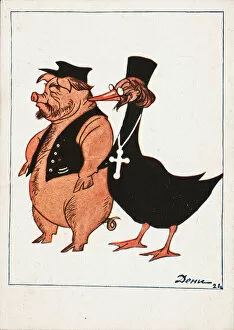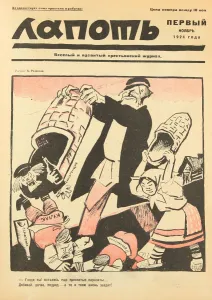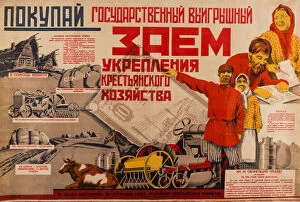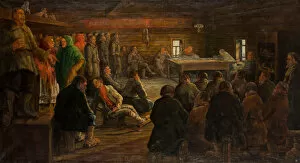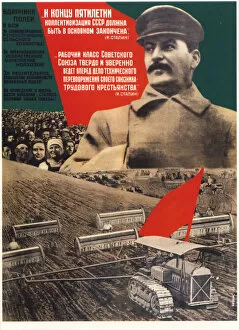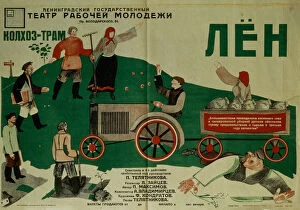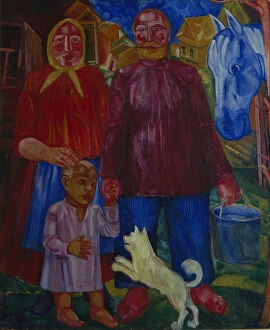Kulaks Collection
In the early 1920s, as the winds of revolution swept across Russia, tensions between landowners and kulaks reached a boiling point
For sale as Licensed Images
Choose your image, Select your licence and Download the media
In the early 1920s, as the winds of revolution swept across Russia, tensions between landowners and kulaks reached a boiling point. The sharpening of knives and teeth became symbolic of their fierce determination to protect their interests. Deni's powerful artwork from 1922 depicted the unholy alliance between the kulak and priest, highlighting their shared disdain for the suffering masses. A year later, his biting satire continued with "Kulak-bloodsucker: What do I care about the hungry?. " - a scathing portrayal of these heartless parasites. As time passed, society grew increasingly intolerant of these exploitative individuals. The Lapot Satirical Journal boldly declared in 1924: "Down with the damned parasites. " Their days were numbered; change was imminent. The cooperative movement gained momentum in late 1920s. A poster urged peasants to join immediately: "You are not yet a member of the cooperative - sign up now. " It was an invitation to break free from feudal shackles and embrace collective progress. By 1932, collectivization had become a central goal. Gustav Klutsis' striking poster proclaimed that by completing the five-year plan, this oppressive system would be eradicated forever. Hope flickered amidst adversity. Artists like Fyodor Kondratov used theater as a medium to shed light on rural struggles. His poster for Flax in 1931 showcased both hardship and resilience within agricultural communities. Viktor Palmov's poignant painting "The Family of Serednyaks" captured one family's journey through collectivization in 1929. They faced challenges but remained steadfast in their commitment to building a better future for themselves and others like them. Through artistry and propaganda alike, society aimed to expose and dismantle class divisions rooted in landownership during this turbulent period. The struggle against kulaks symbolized an ongoing battle for equality and justice, ultimately shaping the course of Russian history.

